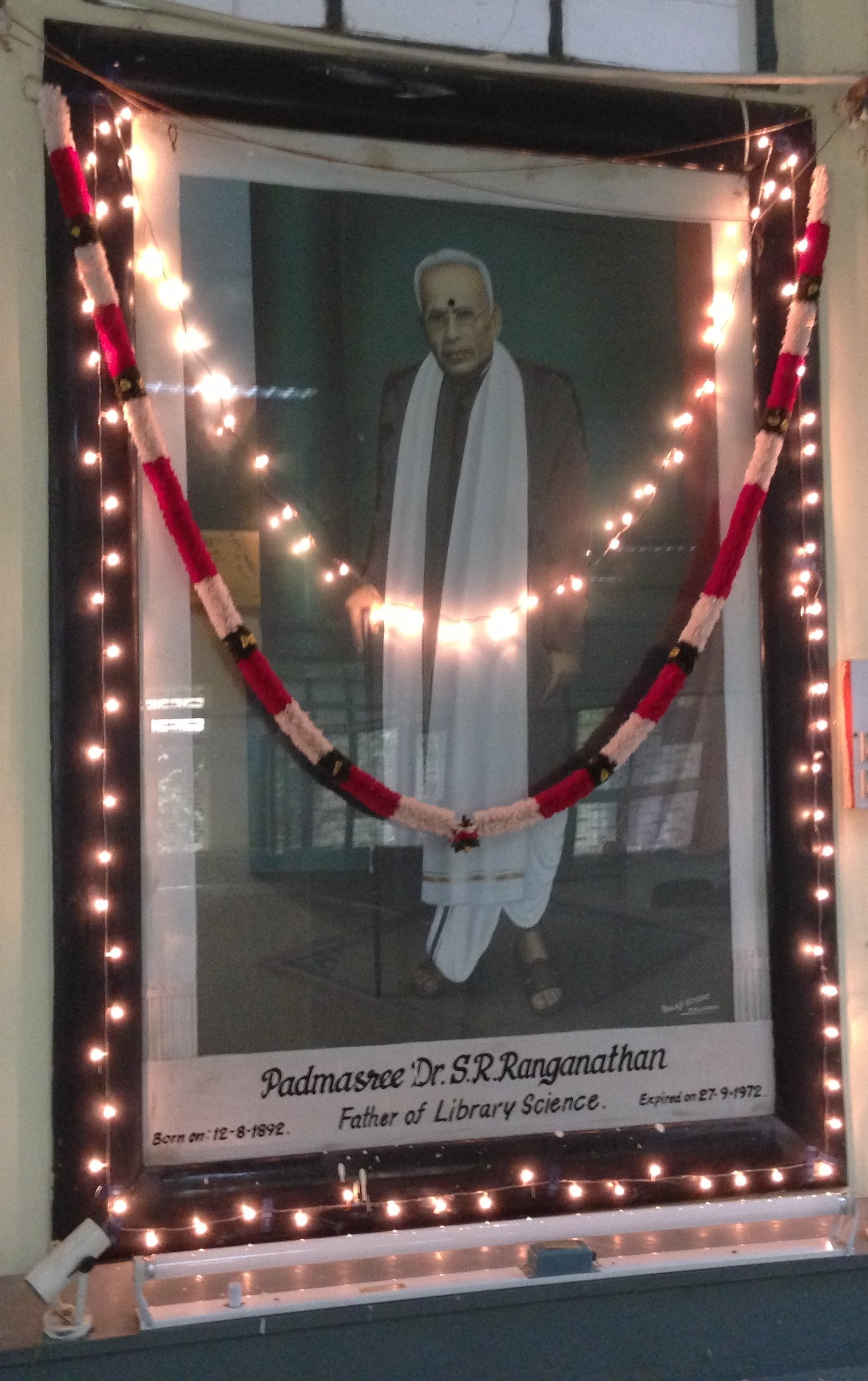Ranganathan
Shiyali Ramamrita Ranganathan (August 9, 1892, Sirkali, Tamil Nadu – September 27, 1972, Bangalore, India) was an Indian librarian librarianship in the country. In 1913 he obtained his first bachelor's degree in Mathematics from the University of Madras, achieving his first university title in 1916. He then became a mathematics professor, working in this role for seven years at three universities in Madras.
Ranganathan was an extremely politically engaged man professionally, fighting for better working conditions, and as a professor, he was concerned with teaching and research in his country. Aiming to improve the library at the University of Madras, he initiated a campaign. In 1924, a librarian position became available at the same university. One of the requirements for the position was that the new librarian should study Library Science in Great Britain, and from there he enrolled in the School of Library Science at University College London for further training and specialization in the course.
In London, one of his professors, WC Berwick Sayers, said that Library Science is a field with a peculiarity: creation; what we learn at university and in books are only the principles. He saw a strong personality in Ranganathan and began to guide his studies. Therefore, he advised him to contact as many professionals as possible and to visit as many libraries as he could. And so Ranganathan did, visiting more than a hundred different types of libraries, each one different from the other.
Returning to India, he was a professor of Library Science for approximately 40 years. In 1928, he conceived the five laws of library science, and in November of that same year, he married Sarana, with whom he had only one child; the ceremony was simple.
Ranganathan made three important contributions to Library Science: the first was the introduction of three distinct levels at which classifiers (who develop classification ) and classifiers work: the idea plane (level of ideas, concepts), the verbal plane (level of the lexicon, of the verbal expression of concepts), and the notational or formal plane (level of fixing concepts in abstract forms). The second contribution refers to his analytical-synthetic approach to subject identification (which before him was essentially deductive, but not inductive). The third contribution was the establishment of eighteen principles that can be considered as an instrument for evaluating classification systems.
Ranganathan published many articles (mostly on the history of mathematics) and more than 50 books, among which 9 stand out: 1. Five Laws of Library Science (1931); 2. Colon Classification (1933); 3. Classified Catalogue Code (1934); 4. Prolegomena to Library Classification (1937); 5. Theory of the Library Catalogue (1938); 6. Elements of Library Classification (1945); 7. Classification and International Documentation (1948); 8. Classification and Communication (1951); 9. Headings and Canons (1955).
On September 27, 1972, at 9:25 PM (Indian official time), after a brief illness, Ranganathan died at his residence in Bangalore. Ranganathan, Shiyali Ramamrita Category: Deaths in 1972.




Post comment